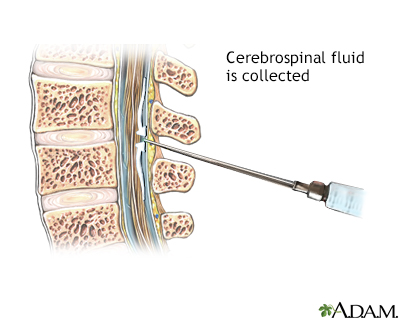
The L4-L5 motion segment provides a bony enclosure for the cauda equina (nerves that continue down from the spinal cord) and other delicate structures.ġ Waldman SD. The L4 myotome is a group of muscles controlled by the L4 spinal nerve and includes parts of several muscles in the back, pelvis, thigh, leg, and foot.ģ Kayalioglu G.
#Spinal fluid image skin

The L4 spinal nerve roots exit the spinal cord through small bony openings (intervertebral foramina) on the left and right sides of the spinal canal. The height of the L4-L5 disc plays an important role in maintaining the lordosis (inward curvature) of the lumbar spine. This disc provides cushioning and shock-absorbing functions to protect the vertebrae from grinding against each other during spinal movements. A disc made of a gel-like material (nucleus pulposus) surrounded by a thick fibrous ring (annulus fibrosus) is situated between the vertebral bodies of L4 and L5. In: Clinical Anatomy of the Spine, Spinal Cord, and Ans. The upper and lower ends of each vertebral body are covered by bony endplates that help resist compressive loads placed on the spine.Ģ Cramer GD. The L4 and L5 vertebral bodies are taller in front than behind. The vertebrae are joined by facet joints (zygapophyseal joints), which are covered by articulating cartilage to provide smooth movements between the joint surfaces.

The region between the transverse process and the vertebral body is called the pedicle. The region between the spinous process and the transverse process is called the lamina. The vertebral arch has 3 bony protrusions: a prominent spinous process in the middle and two transverse processes on either side. Each vertebra consists of a vertebral body in front and a vertebral arch at the back.

The L4-L5 motion segment includes the following structures: Anatomy of the L4-L5 Spinal Motion Segment


 0 kommentar(er)
0 kommentar(er)
